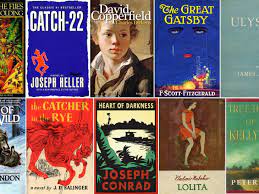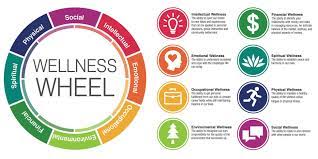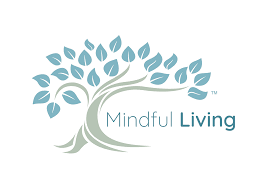Books and Literature: A Gateway to Imagination and Knowledge
Books and literature have been an integral part of human civilization for centuries. They serve as gateways to new worlds, allowing us to explore the depths of our imagination, expand our knowledge, and connect with the experiences of others. In this digital age, where technology dominates our lives, the power of books remains unmatched.
One of the most enchanting aspects of books is their ability to transport us to different times and places. Through the pages of a book, we can visit ancient civilizations or travel to distant galaxies. We can experience the thrill of adventure, the warmth of love, or the depths of despair. Books ignite our imagination, painting vivid pictures in our minds that no movie or video game can replicate.
Literature also acts as a mirror reflecting society’s values, beliefs, and struggles. It allows us to gain insights into different cultures and perspectives, fostering empathy and understanding. Through literature, we can walk in someone else’s shoes and gain a deeper appreciation for diversity.
Moreover, books are a treasure trove of knowledge. They provide us with information on various subjects – from history and science to philosophy and art. Reading expands our intellectual horizons, broadens our perspectives, and fuels curiosity. It encourages critical thinking skills as we analyze characters’ motivations or unravel complex plotlines.
Beyond their educational value, books offer solace in times of solitude or distress. They become loyal companions during lonely nights or moments when we seek refuge from the chaos of daily life. Books have the power to heal wounds by offering comfort, inspiration, or simply an escape into another world.
In recent years, e-books and audiobooks have gained popularity due to their convenience and accessibility. While these formats provide flexibility for readers on-the-go or those with visual impairments, they cannot replace the tactile experience of holding a physical book in your hands—the feeling of turning each page with anticipation.
Fortunately, despite the rise of digital media, the love for physical books remains strong. Bookstores continue to thrive, with their shelves filled with stories waiting to be discovered. The smell of ink and paper, the weight of a book in your hands—these are sensory experiences that cannot be replicated by a screen.
In conclusion, books and literature hold a special place in our lives. They ignite our imagination, broaden our knowledge, and connect us to the world around us. Whether we read for entertainment or self-improvement, books have a unique ability to touch our hearts and minds. So let us cherish this timeless medium and continue to embrace the magic of books in all their forms.
8 Benefits of Books and Literature: Exploring Worlds, Expanding Knowledge, Enhancing Literacy, Inspiring Creativity, Embracing Diversity, Relieving Stress, Igniting Imagination, Preserving History
- Books and literature provide a great way to escape from reality and explore different worlds.
- Books can help to expand our knowledge and understanding of the world around us.
- Reading books helps to improve literacy skills, such as grammar, spelling and comprehension.
- Books can be used as a source of inspiration for creative projects or hobbies.
- Literature provides an opportunity to explore different cultures, beliefs and values from around the world.
- Reading books can help to reduce stress levels by providing a distraction from everyday worries and concerns.
- Books are an excellent way to stimulate the imagination, encouraging creativity and problem-solving skills in children and adults alike.
- Literature is an important tool for preserving history, allowing us to learn about past events in greater detail than ever before possible
Challenges and Limitations of Books and Literature
- Books can be expensive, especially if you buy a lot of them.
- It can be difficult to find the time to read books in our busy lives.
- Reading can be tiring and straining on the eyes, especially for long periods of time.
- It is sometimes hard to keep track of what you have read and what you haven’t when reading multiple books at once.
- It is easy to get stuck in only reading certain genres or authors, which limits your literary experience and knowledge
Books and literature provide a great way to escape from reality and explore different worlds.
Books and Literature: A Gateway to Escape and Exploration
In a world that often feels overwhelming and demanding, books and literature offer a much-needed escape. They provide us with a ticket to different worlds, allowing us to momentarily leave behind the stresses of reality and embark on extraordinary journeys.
When we open the pages of a book, we step into a realm where our imagination knows no bounds. Whether it’s diving into the depths of a fantasy kingdom, embarking on an exciting adventure, or exploring historical events through the eyes of captivating characters, books transport us to places we could only dream of.
Through literature, we can experience emotions and situations that may be far removed from our own lives. We can walk alongside heroes battling mythical creatures or witness the struggles of individuals facing adversity. These stories offer an opportunity for empathy and understanding as we connect with characters who are different from ourselves.
The act of escaping into literature allows us to temporarily detach from our own worries and concerns. It provides respite from the daily grind, giving us moments of solace and relaxation. In these alternate worlds created by authors’ words, we find solace, inspiration, and a sense of freedom.
Moreover, exploring different worlds through books broadens our horizons. It exposes us to diverse cultures, perspectives, and ideas that we may not encounter in our everyday lives. Literature encourages us to question assumptions and challenge preconceived notions as we navigate unfamiliar territories alongside characters who are unlike anyone we’ve ever known.
The power of books lies in their ability to engage all our senses. As we read descriptive passages filled with vivid imagery, our minds paint pictures more vibrant than any movie screen can provide. We feel the rush of wind against our faces as characters soar through imaginary landscapes or taste exotic cuisines described in mouthwatering detail.
In this age of technology where screens dominate our attention, books offer a welcome respite from digital distractions. The tactile experience of holding a book, turning its pages, and feeling the weight of the story in our hands is an irreplaceable pleasure. It allows us to disconnect from the virtual world and reconnect with the simple joy of reading.
In conclusion, books and literature provide a magnificent escape from reality. They transport us to different worlds, ignite our imagination, and broaden our perspectives. Through literature, we find solace, inspiration, and a temporary refuge from the demands of everyday life. So let us embrace the power of books and indulge in their ability to whisk us away on extraordinary adventures.
Books can help to expand our knowledge and understanding of the world around us.
Books can help to expand our knowledge and understanding of the world around us. In a time when information is readily available at our fingertips, books remain a trusted and invaluable resource for gaining in-depth knowledge on a wide range of subjects.
When we delve into the pages of a book, we embark on a journey of discovery. Whether it’s exploring historical events, scientific theories, or philosophical concepts, books offer us the opportunity to delve deeper into topics that intrigue us. They provide detailed explanations, expert insights, and thought-provoking analysis that allow us to grasp complex ideas and broaden our understanding.
Moreover, books offer different perspectives and viewpoints on various subjects. They challenge our preconceived notions and biases, encouraging critical thinking and fostering intellectual growth. By reading diverse authors from different backgrounds and cultures, we gain a more comprehensive understanding of the world’s complexities.
Books also act as windows into different experiences and realities. They enable us to empathize with characters from various walks of life, exposing us to different cultures, struggles, and triumphs. Through literature, we can develop a greater appreciation for diversity while recognizing our shared humanity.
Furthermore, books provide us with an opportunity for self-reflection and personal growth. They offer guidance on topics such as self-help, psychology, or spirituality that can aid in developing new perspectives or overcoming personal challenges. The wisdom imparted by authors can inspire us to make positive changes in our own lives.
In addition to expanding knowledge, reading books enhances our communication skills. As we encounter new vocabulary and writing styles within the pages of literature, our language proficiency improves. We learn how to articulate thoughts more effectively while gaining exposure to different writing techniques that enrich our own written expression.
Lastly, books have an enduring quality that sets them apart from other forms of media. While online articles or social media posts may provide quick information bites, books offer comprehensive exploration of subjects that cannot be condensed into soundbites or headlines. They provide a depth of knowledge that allows us to truly understand and appreciate the complexities of the world.
In conclusion, books are powerful tools for expanding our knowledge and understanding of the world. They offer in-depth exploration, diverse perspectives, personal growth, and improved communication skills. So, let us embrace the magic of books and continue to nurture our curiosity through reading, for it is through books that we can truly expand our horizons.
Reading books helps to improve literacy skills, such as grammar, spelling and comprehension.
Reading Books: Unlocking the Power of Literacy Skills
In our fast-paced digital age, where abbreviations and emojis dominate our communication, the importance of strong literacy skills cannot be overstated. Reading books is a proven method to enhance crucial aspects of literacy, including grammar, spelling, and comprehension. Let’s delve into how books serve as invaluable tools for honing these essential skills.
Grammar is the backbone of effective communication. By immersing ourselves in books, we expose ourselves to well-constructed sentences and proper usage of language. We absorb the correct grammatical structures effortlessly, internalizing them without even realizing it. Through exposure to a wide range of writing styles and genres, we develop an intuitive understanding of sentence construction, punctuation rules, and syntax.
Spelling is another vital aspect of literacy that can be significantly improved through reading books. As we encounter various words within their contextual framework, our brains naturally absorb their correct spelling patterns. Regular exposure to well-written texts helps us recognize common spelling conventions and familiarize ourselves with frequently used vocabulary. Over time, this exposure strengthens our spelling abilities and reduces reliance on auto-correct or spell-check tools.
Comprehension is at the heart of effective reading. Books provide us with diverse narratives and perspectives that challenge our minds and encourage critical thinking. As we engage with characters’ thoughts and emotions, we learn to interpret context clues and infer meaning from the text. This process sharpens our comprehension skills by training us to identify main ideas, draw conclusions, make connections between concepts, and evaluate arguments.
Additionally, reading books enhances our vocabulary repertoire. Exposure to a wide range of words not only improves our ability to express ourselves but also enriches our understanding of language nuances. A robust vocabulary empowers us to communicate more precisely and effectively in both written and spoken forms.
Moreover, reading books fosters creativity by stimulating our imagination. As we delve into captivating stories or explore intricate worlds created by authors, our creativity is sparked. This imaginative engagement fuels our ability to think outside the box and find innovative solutions to problems, both in academic and real-life scenarios.
In conclusion, books are invaluable companions on the journey towards improving literacy skills. Through reading, we absorb correct grammar usage, internalize spelling patterns, enhance comprehension abilities, expand our vocabulary, and ignite our creative thinking. So let us embrace the power of books to unlock the full potential of our literacy skills and open doors to a world of knowledge and expression.
Books can be used as a source of inspiration for creative projects or hobbies.
Books: A Source of Inspiration for Creative Endeavors
Books have the remarkable ability to ignite our creativity and serve as a wellspring of inspiration for various creative projects and hobbies. Whether you’re an artist, a writer, a musician, or someone who simply enjoys exploring new creative outlets, books can be your guiding light.
One of the ways books inspire creativity is through their captivating storytelling. As we immerse ourselves in the narratives woven by skilled authors, we encounter unique characters, intriguing settings, and thought-provoking themes. These elements can spark our imagination and offer fresh perspectives that fuel our own creative endeavors.
For aspiring writers, books provide valuable insights into the craft of storytelling. By reading different genres and styles, we can learn about narrative structures, character development, and effective use of language. Books act as mentors, showing us what works and what doesn’t in the world of literature. They inspire us to experiment with our own writing styles and push the boundaries of our imagination.
Visual artists often find inspiration in books as well. From illustrated novels to art history publications, books offer a wealth of visual references and artistic techniques. They showcase various art forms such as painting, sculpture, photography, and more. Artists can draw inspiration from these works or reinterpret them in their own unique style.
Books also provide a rich source of knowledge for musicians. Biographies of legendary musicians or music theory textbooks can deepen our understanding of different musical genres and techniques. Reading about the lives and struggles of musicians throughout history can be incredibly inspiring for songwriting or composing original pieces.
Beyond specific creative fields, books have the power to inspire hobbies such as cooking or gardening. Cookbooks offer exciting recipes from around the world that awaken our taste buds and encourage culinary experimentation. Gardening books provide guidance on cultivating plants, designing landscapes, and creating beautiful outdoor spaces.
Moreover, books introduce us to diverse cultures and traditions that can inform our creative projects. Exploring literature from different countries exposes us to unique perspectives, customs, and artistic expressions. This cross-cultural exchange can enrich our own creative work by incorporating elements from various traditions.
In a world where we are constantly bombarded with digital media, books offer a respite and a tangible connection to the creative process. The act of flipping through pages, underlining favorite passages, or filling the margins with notes creates a personal interaction that enhances our creative journey.
So, let us embrace the power of books as a source of inspiration for our creative projects and hobbies. They hold within their pages a universe of ideas waiting to be discovered. Whether we seek inspiration for writing, art, music, or any other creative pursuit, books are there to ignite our imagination and guide us towards new horizons of self-expression.
Literature provides an opportunity to explore different cultures, beliefs and values from around the world.
Literature: A Window to the World’s Cultures, Beliefs, and Values
In a world that is becoming increasingly interconnected, understanding and appreciating different cultures has never been more important. Literature serves as a powerful tool in this regard, offering us an opportunity to explore the rich tapestry of diverse cultures, beliefs, and values from around the world.
Through literature, we can embark on a journey of discovery, stepping into the shoes of characters who come from different backgrounds and perspectives. Whether it’s reading about the vibrant streets of India in a novel by Arundhati Roy or delving into the historical struggles of African Americans in Toni Morrison’s works, literature allows us to immerse ourselves in unfamiliar worlds.
By engaging with stories from different cultures, we gain insights into their unique customs, traditions, and ways of life. We learn about their societal structures, family dynamics, and spiritual beliefs. We witness their joys and sorrows, their triumphs and challenges. Literature opens our eyes to the beauty of diversity and helps us recognize our shared humanity.
Moreover, exploring different cultures through literature fosters empathy and understanding. As we delve into the lives of characters who may be vastly different from us in terms of race, religion, or nationality, we develop a deeper appreciation for their struggles and triumphs. We begin to see beyond stereotypes or preconceived notions and recognize the universal emotions that connect us all.
Literature also acts as a bridge between generations. It allows us to understand historical events through the eyes of those who experienced them firsthand. By reading accounts of war-torn countries or narratives set during pivotal moments in history, we gain a more nuanced understanding of past events and their lasting impact on society.
Furthermore, literature provides a platform for marginalized voices to be heard. It amplifies stories that may have been overlooked or silenced by mainstream narratives. By reading works by authors from diverse backgrounds – whether they are women, people of color, or members of the LGBTQ+ community – we gain a broader perspective on the human experience and challenge our own biases.
In a world that sometimes seems divided, literature has the power to bring people together. It encourages dialogue, sparks conversations, and promotes cultural exchange. As we engage with different narratives and perspectives, we develop a greater appreciation for the beauty of our shared humanity.
In conclusion, literature offers us an invaluable opportunity to explore different cultures, beliefs, and values from around the world. It broadens our horizons, fosters empathy, and promotes understanding. So let us embrace the power of literature as a window to the world’s diverse tapestry and celebrate the richness that comes from engaging with stories that are different from our own.
Reading books can help to reduce stress levels by providing a distraction from everyday worries and concerns.
Reading books: A Stress-Relieving Escape from Everyday Worries
In our fast-paced and demanding world, stress has become an all-too-familiar companion. The pressures of work, relationships, and daily responsibilities can take a toll on our mental well-being. Thankfully, there is a simple and enjoyable way to find respite from the chaos of life: reading books.
Books have the remarkable ability to transport us to different worlds, immersing us in captivating stories and engaging characters. When we open the pages of a book, we step into a realm where our everyday worries fade away. The act of reading provides a much-needed distraction from our anxieties and concerns.
As we delve into the pages of a book, our minds become fully absorbed in the narrative. Our focus shifts away from the stressors that weigh us down, allowing us to enter a state of relaxation and escape. The power of storytelling takes over, captivating our attention and providing an outlet for emotional release.
In this literary sanctuary, we can find solace and comfort. Whether it’s getting lost in an exciting adventure or immersing ourselves in a heartwarming romance, books offer an opportunity to momentarily forget about our own troubles. They offer us an alternative reality where we can explore different perspectives and experiences.
Moreover, reading books stimulates our imagination. As we envision the scenes described on the pages before us, our minds are transported to new landscapes filled with vivid imagery. This imaginative exercise helps to shift our focus away from stress-inducing thoughts and allows us to enter a state of calmness.
The act of reading itself also promotes relaxation by providing a quiet and peaceful space for introspection. Curling up with a good book creates an atmosphere conducive to unwinding and finding inner tranquility. It becomes a personal retreat where we can disconnect from technology and immerse ourselves in the written word.
Scientific research supports the notion that reading books reduces stress levels. Studies have shown that reading can lower heart rate and blood pressure, providing a physical response to the mental relaxation experienced while engrossed in a book. It’s a natural and accessible way to find relief from the pressures of life.
So, the next time you feel overwhelmed by stress, reach for a book. Allow yourself the pleasure of escaping into its pages, leaving behind your worries for a little while. Let the power of storytelling transport you to new realms and provide much-needed respite. Discover the stress-relieving benefits that books and literature have to offer and embrace this simple yet effective tool for self-care.
Books are an excellent way to stimulate the imagination, encouraging creativity and problem-solving skills in children and adults alike.
Books are an excellent way to stimulate the imagination, encouraging creativity and problem-solving skills in children and adults alike. In a world where technology often dominates our attention, the power of books to spark imagination remains unparalleled.
For children, books open doors to magical worlds filled with fantastical creatures, brave heroes, and exciting adventures. As they immerse themselves in stories, their minds come alive with vivid imagery and endless possibilities. They learn to visualize scenes and characters, enhancing their creative thinking abilities.
Through books, children are exposed to different perspectives and cultures. They learn about diverse characters and situations that expand their understanding of the world around them. This exposure nurtures empathy and encourages them to think critically about different scenarios, fostering problem-solving skills.
Moreover, books provide a safe space for children to explore their own ideas and thoughts. As they encounter various characters facing challenges or making decisions, they develop their own analytical skills. They learn to assess situations from multiple angles and consider different solutions—a valuable skill that extends beyond the pages of a book.
The benefits of reading for adults are equally significant. Books offer an escape from daily routines, allowing adults to engage in imaginative thinking and tap into their creativity. Whether it’s diving into a gripping mystery or exploring a thought-provoking novel, reading stimulates the mind and encourages new ideas.
Books also serve as sources of inspiration for problem-solving in real-life situations. Reading about characters overcoming obstacles or finding innovative solutions can inspire adults to think outside the box when faced with challenges of their own. It broadens their perspective by presenting alternative viewpoints and approaches.
Additionally, reading literature enhances communication skills by exposing readers to rich vocabulary and diverse writing styles. As readers encounter different authors’ voices, they develop a greater appreciation for language nuances and storytelling techniques—a valuable asset in both personal and professional settings.
In conclusion, books are powerful tools that ignite the imagination in both children and adults while fostering creativity and problem-solving skills. They transport us to new worlds, challenge our thinking, and inspire us to explore innovative solutions. So let us continue to embrace the magic of books, for they hold the key to unlocking our imaginations and nurturing our creative potential.
Literature is an important tool for preserving history, allowing us to learn about past events in greater detail than ever before possible
Literature: Preserving History and Unveiling the Past
In the vast tapestry of human history, literature shines as a beacon, preserving the essence of bygone eras and enabling us to delve into the depths of past events like never before. Through literature, we are granted access to a wealth of knowledge and insights that bring history to life in vivid detail.
The written word has long been revered as a tool for recording and transmitting information across generations. From ancient scrolls to modern novels, literature encapsulates the stories, experiences, and perspectives of individuals who have shaped our world. It serves as a timeless vessel that carries the weight of history, allowing us to learn from our predecessors and avoid repeating their mistakes.
One remarkable aspect of literature is its ability to transport us into different time periods. By immersing ourselves in historical novels or memoirs, we can witness events through the eyes of those who lived them. We gain intimate glimpses into different cultures, societies, and pivotal moments that have shaped our collective narrative.
Literature also fills gaps in our knowledge by providing nuanced perspectives on historical events. While textbooks may offer concise summaries, literature breathes life into these narratives by capturing the emotions, motivations, and complexities of individuals caught up in historical circumstances. It allows us to understand not only what happened but also why it happened.
Moreover, literature often sheds light on lesser-known aspects of history that might otherwise be overlooked. It uncovers hidden stories and marginalized voices that have been silenced or overshadowed by dominant narratives. Through diverse literary works, we gain a more comprehensive understanding of past events—a mosaic composed of multiple perspectives.
By preserving history in such rich detail, literature fosters empathy and connection across time periods. It bridges gaps between generations and enables us to relate to people who lived centuries ago. We find commonalities in their struggles, hopes, and dreams—realizing that despite technological advancements or cultural shifts, the human experience remains remarkably consistent.
In the digital age, where information is easily accessible but often fragmented, literature stands as a steadfast guardian of historical knowledge. It encourages us to explore beyond mere facts and figures, inviting us to engage with the emotional and intellectual complexities of the past. Literature allows history to transcend textbooks and become a living, breathing entity that resonates within our hearts and minds.
In conclusion, literature plays a crucial role in preserving history and deepening our understanding of past events. Through its pages, we gain access to the intricate details, diverse perspectives, and emotional landscapes that shape our collective human story. By embracing literature as a tool for historical exploration, we can ensure that the lessons of the past continue to guide us towards a brighter future.
Books can be expensive, especially if you buy a lot of them.
Books can be expensive, especially if you buy a lot of them. While books offer countless benefits, it’s important to acknowledge the con of their cost. As avid readers know, building a personal library can quickly become a costly endeavor.
The price of books varies depending on factors such as format (hardcover, paperback, or e-book), genre, and edition. New releases and bestsellers often come with a higher price tag, making it challenging for book lovers to keep up with their reading list without breaking the bank.
For those who devour books at a rapid pace, the expenses can add up quickly. The desire to explore different genres and authors may lead to an ever-growing collection that strains the budget. Additionally, some rare or out-of-print books can be exorbitantly priced due to their scarcity.
However, it’s worth noting that there are ways to mitigate this con. Libraries offer an excellent solution for book enthusiasts on a tight budget. Borrowing books from libraries not only saves money but also encourages community engagement and supports local institutions.
Another option is buying second-hand books from used bookstores or online platforms. These pre-loved treasures often come at significantly reduced prices while still providing the joy of reading physical copies. Additionally, book swaps or sharing programs among friends and family can help diversify reading material without incurring extra costs.
Lastly, digital formats such as e-books or audiobooks have gained popularity due to their affordability compared to physical copies. Online marketplaces also frequently offer discounted or free e-books for readers to enjoy.
While the cost of books may be a disadvantage for some readers, it’s essential to weigh it against the immeasurable value that literature brings into our lives. The knowledge gained, the worlds explored, and the emotions evoked by books are priceless experiences that enrich our existence.
In conclusion, while books can be expensive—particularly when accumulating a large collection—there are alternative options available to make reading more affordable. By exploring libraries, embracing second-hand books, or opting for digital formats, readers can continue to indulge in the joy of literature without straining their wallets. After all, the benefits of books and literature far outweigh the temporary setback of their cost.
It can be difficult to find the time to read books in our busy lives.
The Time Crunch: A Con of Books and Literature
In our fast-paced, modern lives, finding the time to read books can be a challenge. With endless responsibilities, demanding schedules, and constant distractions, carving out dedicated reading time often takes a backseat. This unfortunate reality is one of the downsides of books and literature in today’s busy world.
The demands of work, family, and social commitments can leave us feeling overwhelmed and exhausted. As a result, the precious moments we once had for leisurely reading may dwindle away. The struggle to find uninterrupted time becomes all too familiar, as we juggle numerous tasks and obligations.
Technology also plays a significant role in diverting our attention from books. The allure of social media, streaming services, and endless online content can easily consume our free time. Scrolling through news feeds or binge-watching TV shows can be tempting distractions that pull us away from the pages of a book.
Moreover, commuting or waiting in queues used to provide opportunities for avid readers to delve into their favorite novels. However, with the rise of smartphones and other portable devices, these moments are often spent scrolling through social media or playing mobile games instead.
The digital age has also brought about shorter attention spans. With information available at our fingertips in bite-sized formats, diving into a lengthy book can seem daunting. The instant gratification provided by quick online reads may overshadow the patience required to immerse ourselves in a book’s narrative.
Despite these challenges, it is crucial to recognize the value of reading in our lives. Books offer an escape from reality, allowing us to unwind and recharge our minds. They provide intellectual stimulation and expand our horizons beyond the confines of our daily routines.
To overcome the con of finding time for reading amidst our busy lives requires conscious effort and prioritization. Setting aside dedicated reading time each day—even if it is just 15 minutes—can make a significant difference over time. Creating a reading routine, such as before bed or during lunch breaks, can help make reading a consistent habit.
It is also essential to cultivate a healthy relationship with technology. While it offers numerous benefits, setting boundaries and limiting screen time can create space for books to flourish. Turning off notifications or designating specific periods for digital detox can help reclaim time for reading.
In conclusion, the struggle to find time for books and literature in our busy lives is undoubtedly a con. However, recognizing the importance of reading and making conscious efforts to prioritize it can lead to a more balanced and fulfilling existence. By carving out moments of tranquillity amidst the chaos, we can rediscover the joy and enrichment that books bring to our lives.
Reading can be tiring and straining on the eyes, especially for long periods of time.
The Strain of Reading: Taking Care of Your Eyes
While books and literature offer a multitude of benefits, it is important to acknowledge one potential drawback: the strain reading can place on our eyes. Spending long hours engrossed in a book can sometimes lead to tired, fatigued eyes, causing discomfort and even headaches. However, with a few simple precautions, we can ensure that our reading experiences remain enjoyable and eye-friendly.
One of the primary culprits behind eye strain during reading is poor lighting. Insufficient or harsh lighting conditions can put unnecessary stress on our eyes as we strain to focus on the text. To alleviate this issue, it is crucial to create an appropriate reading environment. Opt for soft, natural lighting whenever possible, positioning yourself near a window or using a gentle desk lamp that illuminates the page evenly.
Another factor contributing to eye strain is prolonged periods of reading without breaks. Our eyes are not designed for continuous focus at close distances for extended periods. It is essential to give your eyes regular breaks by looking away from the book and focusing on distant objects or simply closing your eyes for a few moments. These short breaks allow your eye muscles to relax and reduce fatigue.
The choice of font size and type also plays a significant role in preventing eye strain. Selecting a font that is too small or overly decorative can make reading more challenging and tiring for the eyes. Opt for larger fonts with clear spacing between lines and paragraphs to enhance readability and reduce eyestrain.
Additionally, maintaining proper posture while reading can help alleviate strain on both your eyes and body. Sit in a comfortable chair with good back support, ensuring that your book is at an appropriate distance from your face—neither too close nor too far away—to minimize unnecessary eye movement.
Lastly, if you find yourself frequently experiencing eye strain while reading, it may be beneficial to consult an optometrist or ophthalmologist. They can assess your eyesight and prescribe corrective lenses, if necessary, to ensure comfortable reading experiences.
While reading can indeed be tiring and straining on the eyes, it is important to remember that with a few adjustments and conscious efforts, we can mitigate these challenges. By creating an eye-friendly reading environment, taking regular breaks, choosing appropriate font sizes, maintaining good posture, and seeking professional advice when needed, we can continue to enjoy the wonders of books and literature without compromising our eye health. So let us prioritize self-care while indulging in the joy of reading.
It is sometimes hard to keep track of what you have read and what you haven’t when reading multiple books at once.
The Challenge of Juggling Multiple Books: Keeping Track of Your Reading Journey
For avid readers, the allure of multiple books at once can be irresistible. The prospect of diving into different worlds, genres, and narratives simultaneously is undeniably exciting. However, amidst this literary adventure, there lies a con that many book enthusiasts have encountered – the struggle to keep track of what you have read and what you haven’t.
In the midst of immersing yourself in various stories, it’s easy to lose track of characters, plotlines, and even key details. As you switch between books, it becomes a challenge to recall where you left off or remember important events that occurred earlier in the narrative. This can lead to confusion and hinder your overall reading experience.
One common solution is to rely on bookmarks or sticky notes as reminders. Placing them strategically in each book helps mark your progress and serves as a visual cue when you return to a particular story. However, even with these aids, it can still be a daunting task to navigate between multiple narratives seamlessly.
Another approach is to maintain a reading journal or use digital tools such as reading apps or websites. These platforms allow you to track your reading progress by recording the titles, authors, and dates started and finished for each book. Additionally, they often provide features like note-taking capabilities or personalized reading lists that can help in keeping tabs on your literary adventures.
However, despite these methods, some readers may find themselves overwhelmed by the sheer volume of information they need to manage when juggling multiple books. The risk of mixing up characters or confusing plotlines becomes more significant as time goes on.
Yet, it’s important to remember that reading should ultimately be an enjoyable experience rather than a race towards completion. If the challenge of keeping track becomes too burdensome or detracts from your enjoyment of each book individually, consider focusing on one story at a time instead. This allows for deeper immersion and a more thorough understanding of the narrative.
In conclusion, while reading multiple books at once can be an exhilarating endeavor, it does present the challenge of keeping track of your progress. Finding a system that works for you, whether it’s through physical aids like bookmarks or utilizing digital tools, can help alleviate some of this difficulty. However, always prioritize your reading pleasure and adjust your approach if necessary. After all, the joy of literature lies in the journey itself, regardless of how many books you choose to explore simultaneously.
It is easy to get stuck in only reading certain genres or authors, which limits your literary experience and knowledge
The Pitfall of Limiting Literary Exploration: Breaking Free from Genre and Author Constraints
In the vast world of books and literature, it’s easy to find comfort in familiar genres or beloved authors. We all have our preferences, whether it’s the excitement of a thrilling mystery or the enchantment of a fantasy realm. However, there is a con to this preference-driven approach: the risk of limiting our literary experience and knowledge.
When we confine ourselves to specific genres or authors, we inadvertently close ourselves off from the vast array of perspectives, ideas, and writing styles that exist. While it’s natural to gravitate towards what we enjoy most, it’s essential to challenge ourselves by exploring new literary territories.
By venturing beyond our comfort zones, we open ourselves up to new worlds and fresh perspectives. Reading different genres exposes us to diverse writing styles, themes, and subject matters that can broaden our horizons. It allows us to see the world through different lenses and encourages empathy by immersing us in unfamiliar experiences.
Similarly, exploring various authors introduces us to unique voices and storytelling techniques. Each writer has their own distinct way of crafting narratives and characters. By delving into different authors’ works, we gain a deeper understanding of the artistry behind writing and appreciate the multitude of literary talents out there.
Moreover, stepping outside familiar genres or authors can spark unexpected interests. It may lead us down unexplored paths that ignite newfound passions or reveal hidden gems that we might have otherwise missed. The beauty of literature lies in its ability to surprise and inspire us when we least expect it.
To break free from genre or author constraints, one approach is to actively seek recommendations from friends, librarians, or online reading communities. Engaging in book clubs can also expose us to a variety of titles that we might not have considered on our own. Furthermore, literary awards and bestseller lists can serve as guides for discovering acclaimed works from different genres and authors.
Remember, the goal is not to abandon our preferred genres or authors completely but rather to expand our literary palate. By embracing a diverse range of books, we enrich our reading experience and develop a more nuanced understanding of the world. We become well-rounded readers with a broader knowledge base and a deeper appreciation for the art of storytelling.
In conclusion, while it’s tempting to stick to what we know and love, limiting ourselves to specific genres or authors can hinder our literary growth. By stepping outside our comfort zones, we embark on a journey of discovery, broadening our horizons and expanding our understanding of the written word. So let us embrace the diversity that books and literature offer, for every page turned is an opportunity for new insights and personal growth.








